The exhibition Affairs of State: 118 Years of Diplomacy and Entertaining at Anderson House displays more than forty artifacts, photographs and documents—as well as historical film footage—drawn from the Society of the Cincinnati’s museum and library collections as well as several individual lenders. This selection of the objects on view reflects the variety, beauty and chronology of this exhibition highlighting diplomacy and entertaining at Anderson House.
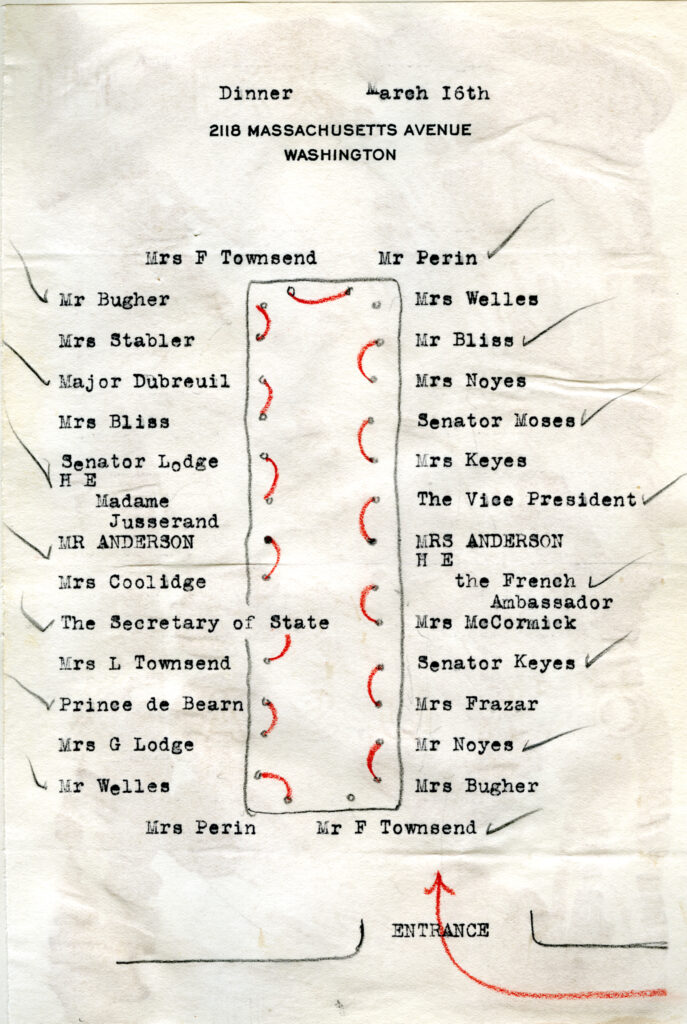
“A Book of Dinner lists and Plans …”
1915-1929The Society of the Cincinnati, Gift of Isabel Anderson, 1938
Precedence ruled at the dinner table, as shown in Isabel Anderson’s detailed dinner book—one of two detailing twenty-four years of diplomatic and family dinners at Anderson House. Rank was prescribed by a list dictating levels of official station, which then determined table placement, which determined who escorted whom from cocktails to the dinner table. Guests were never paired with the person they arrived with, and this diagram shows in red the couplings chosen by the hostess. The male guest of highest honor would be seated to Isabel’s right, and his wife at Larz’s right. This dinner on March 16, 1921, included the new vice president, the secretary of state, the French ambassador to the U.S., two senators, and the Townsends who lived across the street.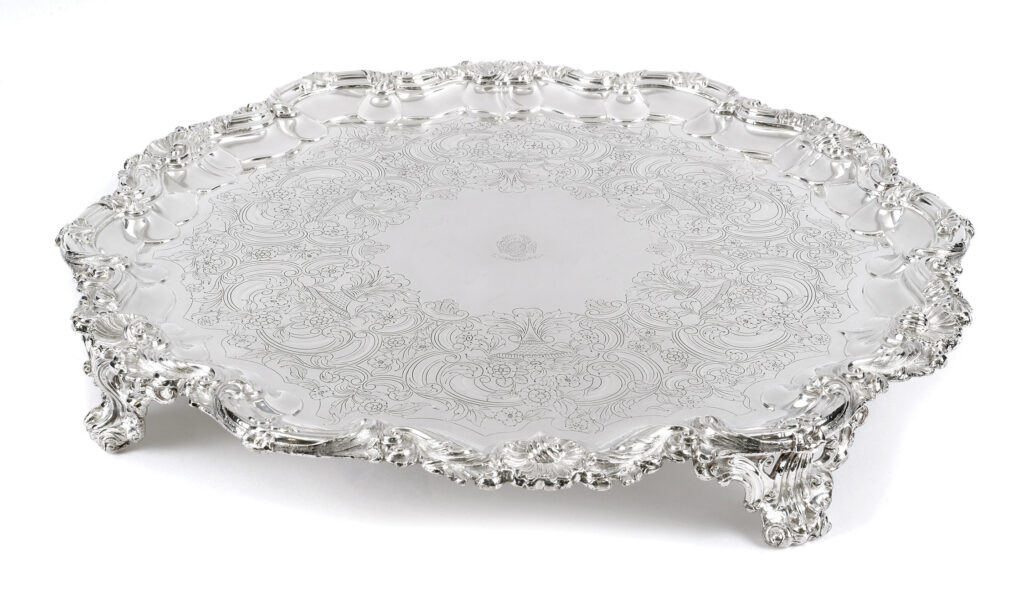
Salver
American
ca. 1910The Society of the Cincinnati, Gift of Anne Wallingford Perin, 1978
The Andersons’ footmen would have used this silver-plated salver—a large tray without handles—to carry and serve glassware and dishes to small groups, or to present a letter or calling card that had been left for the Andersons at their front door.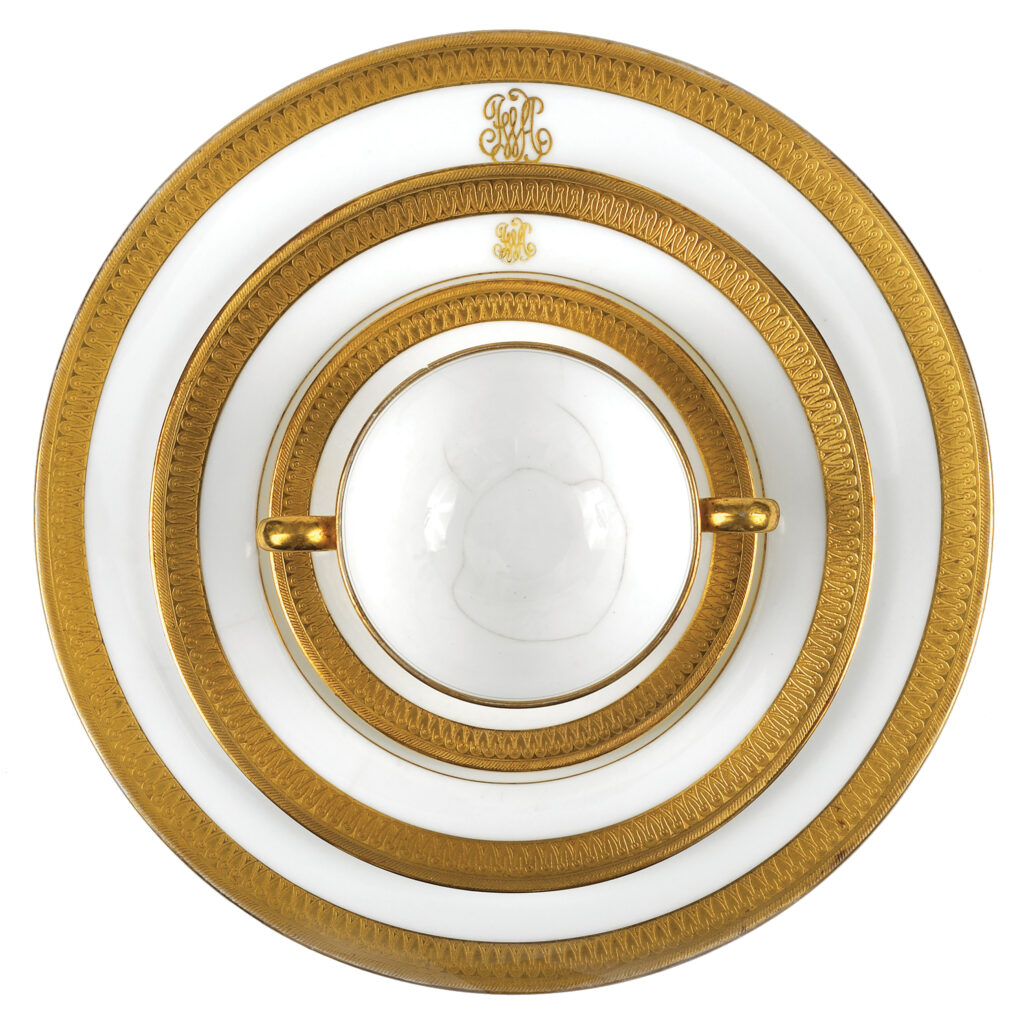
Formal china
Mintons, Staffordshire, England
ca. 1901-1908The Society of the Cincinnati, Gift of Isabel Anderson, 1938
For formal entertaining at Anderson House, Larz and Isabel used a set of English porcelain made by Mintons, one of the leading ceramic factories of the Victorian era and America’s Gilded Age. The Andersons bought this service, decorated in gold leaf with one of Mintons’ standard patterns, at retailer Gilman Collamore & Company in New York City, then had it personalized with their monogram. The more than five-hundred-piece service included dinner, salad, and bread-and-butter plates; soup and dessert bowls; cups; and saucers.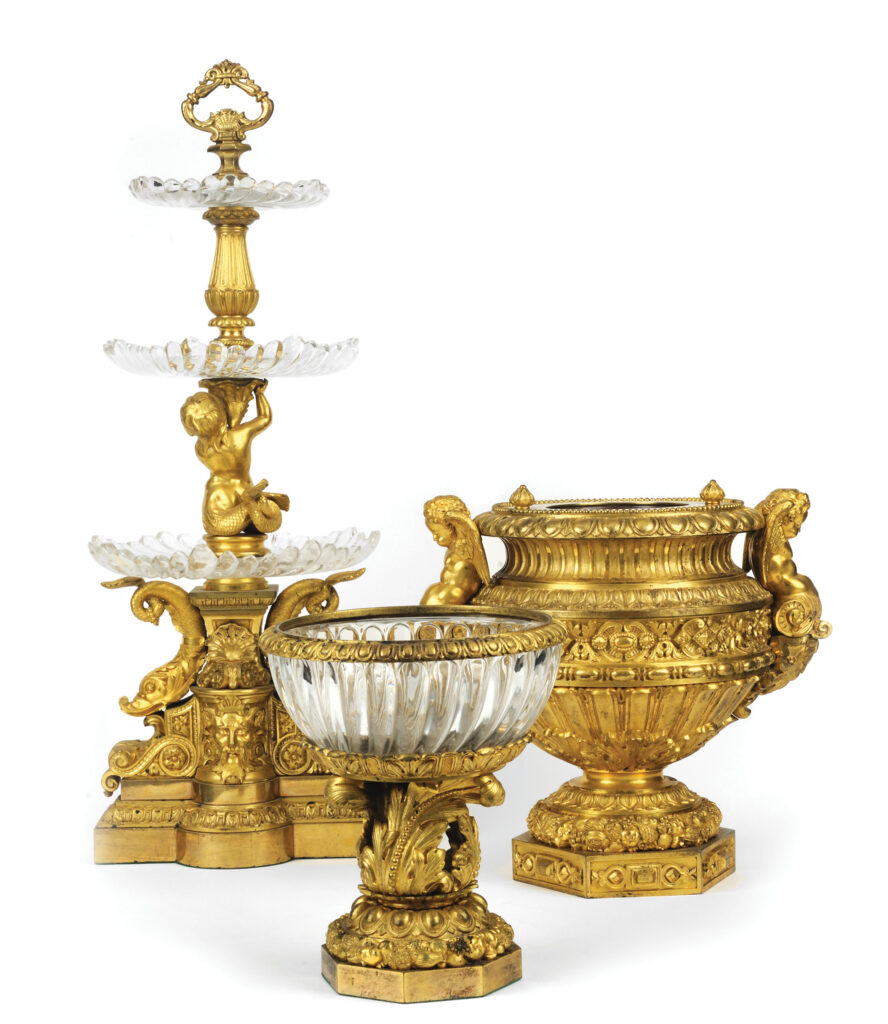
Table garniture
Thomire and Co., Paris, France
ca. 1830The Society of the Cincinnati, Gift of Isabel Anderson, 1938
This three-tiered bonbon dish, berry bowl, and wine cooler are from a thirteen-piece set of gilt brone and glass table garniture that Larz and Isabel Anderson used on their dinner tables in Washington and abroad. They purchased the antique set—which includes the impressive candelabrum and mirrored plateau that are still displayed in the Dining Room today—in 1912 in Brussels, while Larz served as U.S. minister to Belgium.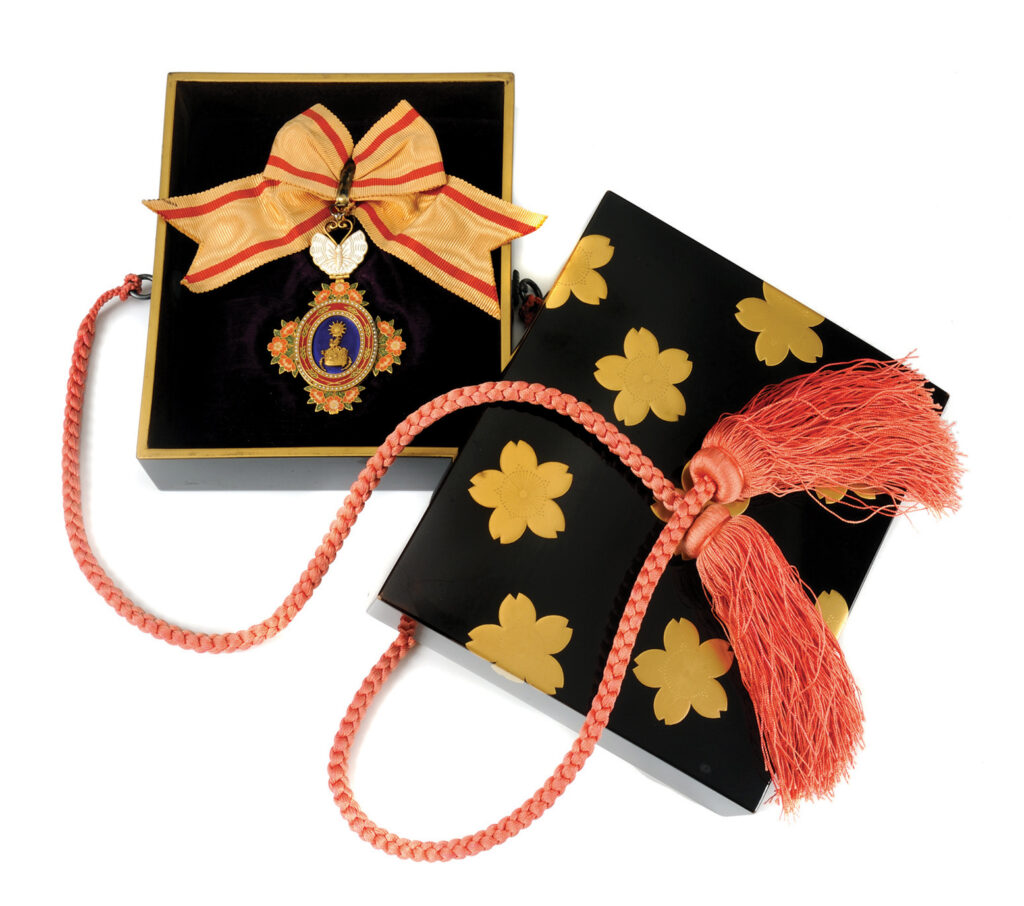
Order of the Precious Crown, Butterfly (3rd class)
Japanese
Early 20th centuryThe Society of the Cincinnati, Gift of Isabel Anderson, 1938
This Japanese order, established in 1888, was reserved for women to honor their contributions to the nation. It was bestowed on Isabel Anderson after her husband retired from the diplomatic corps in 1913, and is evidence of the impact that Isabel had in the countries where Larz served. The gold-and-enamel medal with a silk ribbon rests in a lacquered wood-and-velvet box with silk cords.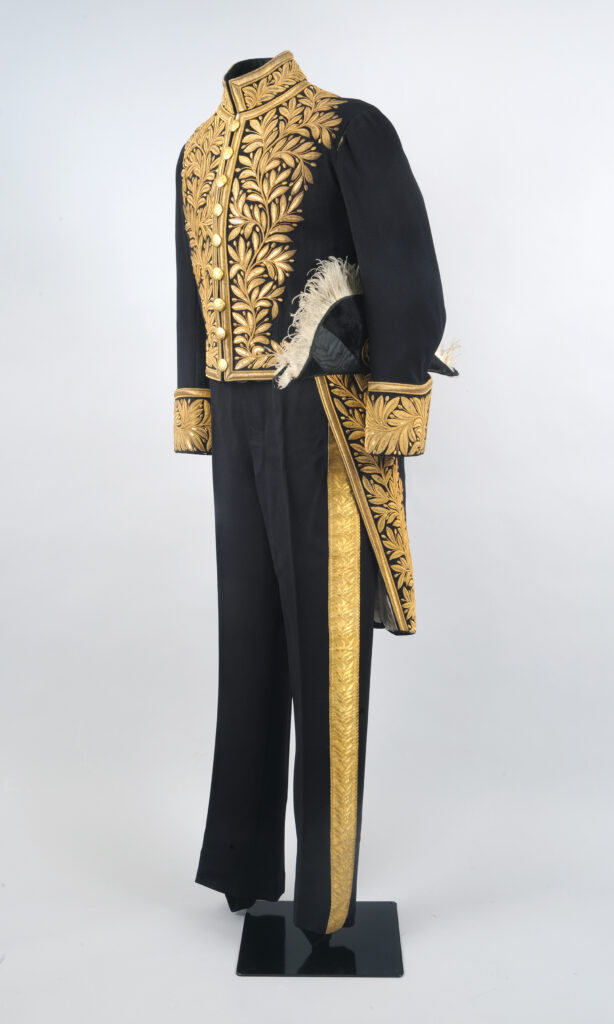
Diplomatic uniform
Davies & Son, London, England
1911The Society of the Cincinnati, Gift of Isabel Anderson, 1938
Larz Anderson had this diplomatic uniform made in 1911 for his posting as the U.S. envoy extraordinary and minister plenipotentiary to Belgium. Created by London-based tailor Davies & Son, the opulent ensemble mimicked the court dress worn by diplomats presenting at the courts of various countries, especially throughout Europe. Though conventional suits were de rigueur for U.S. diplomats in the 1910s, it was not unusual for Americans working in the foreign service to acquire such attire when based in countries where such splendor was expected.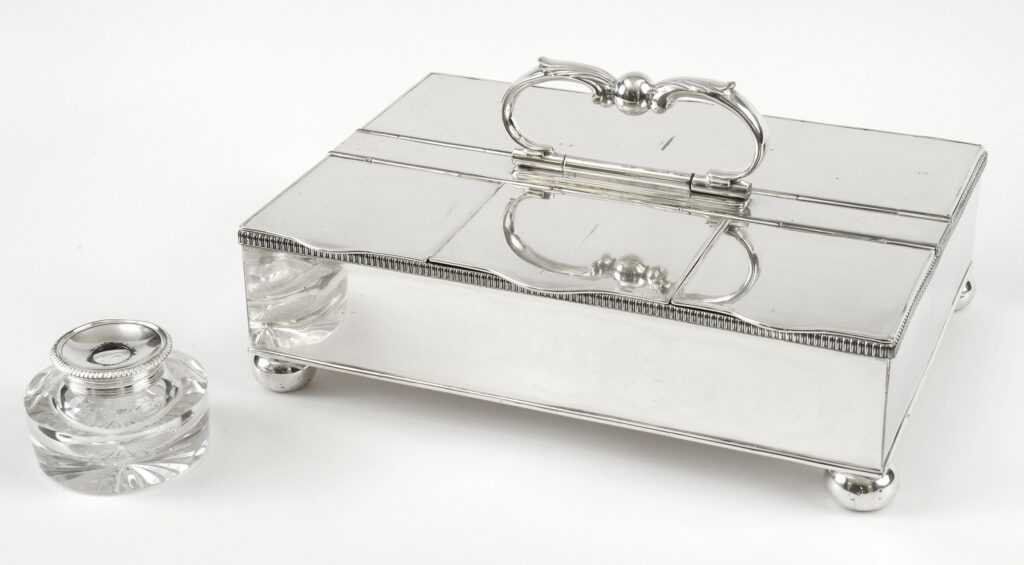
Ambassador’s writing box
ca. 1900The Society of the Cincinnati, Gift of Anne Wallingford Perin, 1978
Larz Anderson was so proud of his diplomatic career that he had it chronicled on the inside lid of this silver-plated ambassador’s writing box. He bought it long before he attained the rank of ambassador in 1913, and had “cheek enough”—as he put it—to have it incorporated into the mural over the fireplace in the Great Stair Hall (completed in 1909), to represent his career in diplomacy.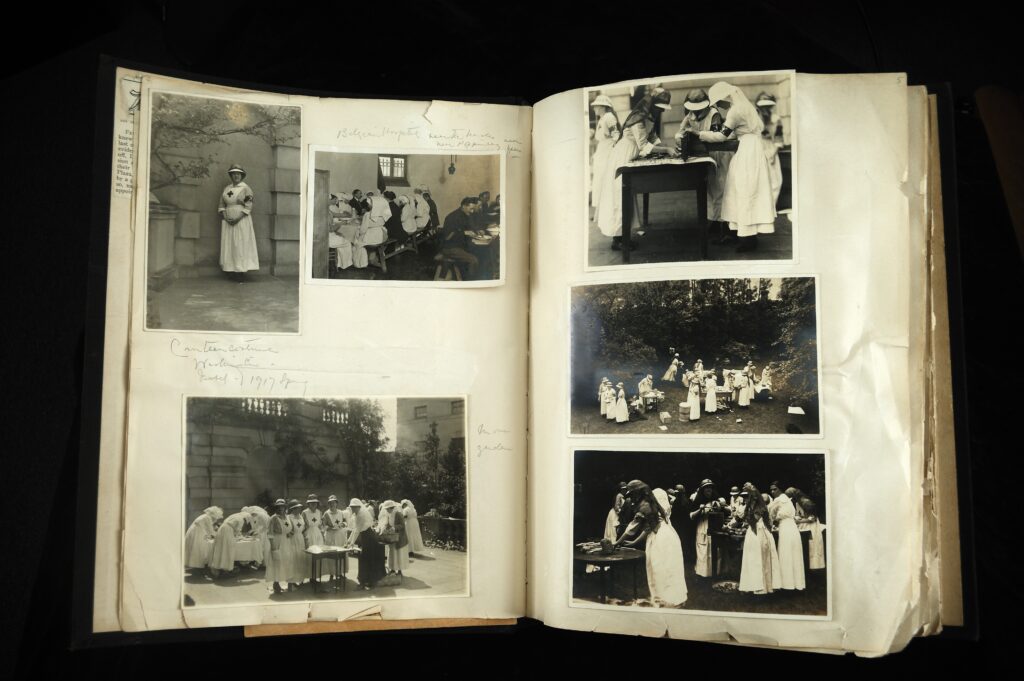
Scrapbook
Kept by Isabel Anderson
Early 20th centuryThe Society of the Cincinnati, Donated on behalf of the family of Augustus M. Anderson, life long employee of Isabel and Larz Anderson, 2017
Isabel Anderson’s prominent role in WWI began when she spearheaded the creation of a Red Cross Refreshment Corps. The photographs in this scrapbook chronicling her service during WWI show Isabel and her fellow volunteers in the Anderson House garden, all in uniform, wrapping bandages and preparing sandwiches to be served from a first-of-its-kind motorized canteen. For her dedication and skills caring for the sick and wounded at home and on the war front in Europe, Isabel was awarded a service medal from the American Red Cross, along with even greater honors from Belgium and France.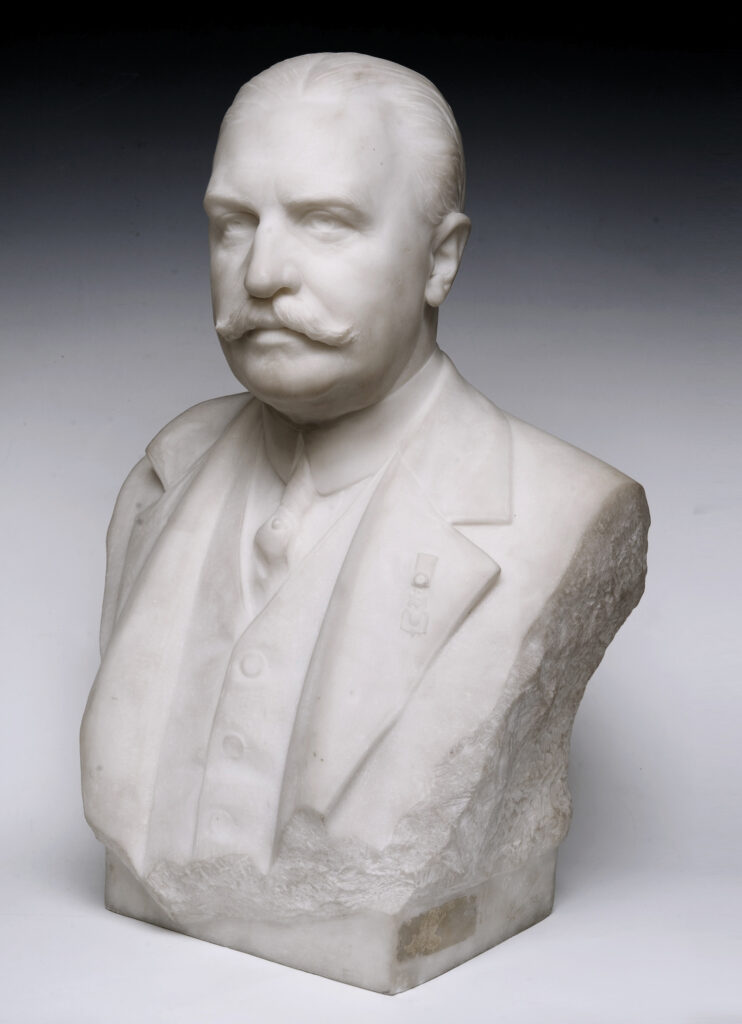
Larz Anderson
Fanfani (Italian)
Late 19th or Early 20th centuryThe Society of the Cincinnati, Museum Acquisitions Fund purchase, 2003
Larz Anderson—depicted in this marble bust wearing the Eagle insignia of the Society of the Cincinnati—and his wife, Isabel, lived at Anderson House from 1905 to 1937. After Larz’s death in 1937, Isabel oversaw the gift of the house to the Society to become its headquarters and museum.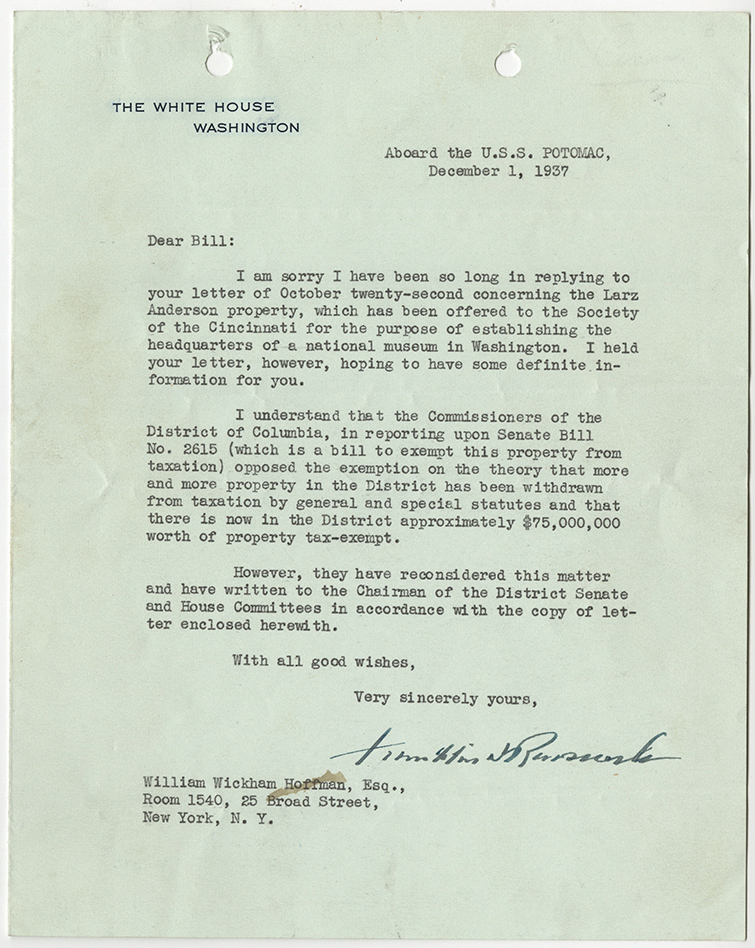
Franklin D. Roosevelt to William Wickham Hoffman
December 1, 1937The Society of the Cincinnati Archives
President Franklin Roosevelt wrote to William Hoffman from the USS Potomac in 1937, assuring him that the District of Columbia Commissioners had reconsidered the matter of taxation of the Anderson House property, as it was planned to be used as the headquarters of a national museum in Washington. The very next month the bill establishing the Society of the Cincinnati as tax exempt was introduced in the House of Representatives, where it eventually passed, allowing the Society to proceed with plans for its new museum.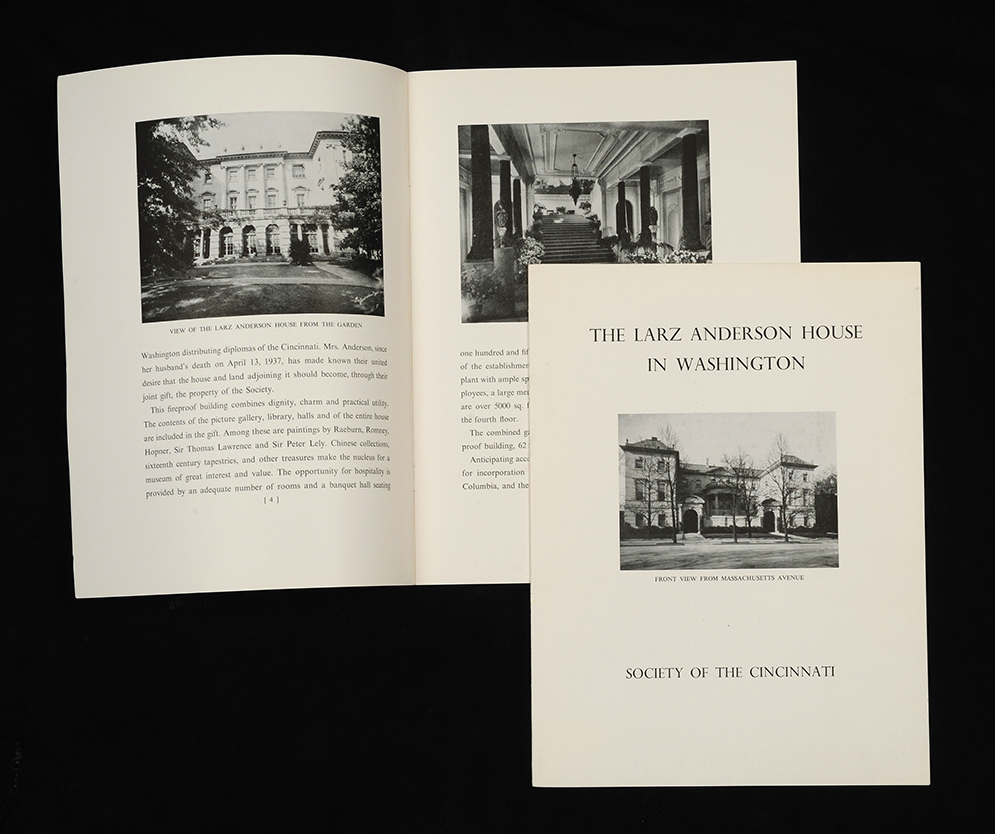
“The Larz Anderson House in Washington: Society of the Cincinnati”
Washington, D.C., ca. 1938The Society of the Cincinnati Collections
The new museum’s first professional marketing brochure was published in 1938. Fourteen pages long, it included handsomely photographed images of all the major rooms and was available to the public, who were welcomed to the country’s first museum dedicated to the American Revolution, open every Monday.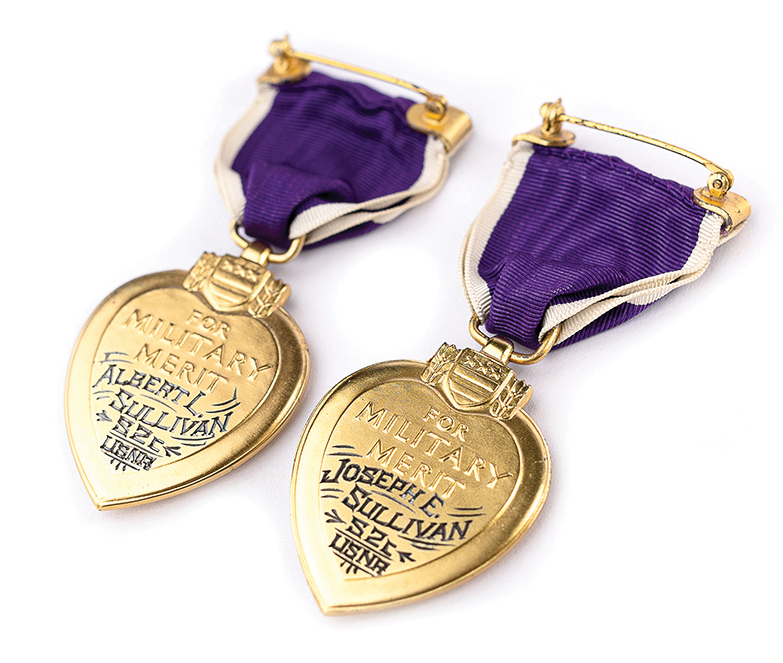
Purple Heart medals for Albert L. Sullivan and Joseph E. Sullivan
American, ca. 1944On loan from Kelly Sullivan
Thomas and Alleta Sullivan of Waterloo, Iowa, were presented with five Purple Hearts after the tragic loss of their five sons aboard the USS Juneau in 1942, at a ceremony held in the Key Room of Anderson House two years later. The event was captured on film by Paramount News, and a clip is shown as part of the exhibition. Two of the medals are known to survive today, owned by the granddaughter of one of the five sailors (Albert) who perished.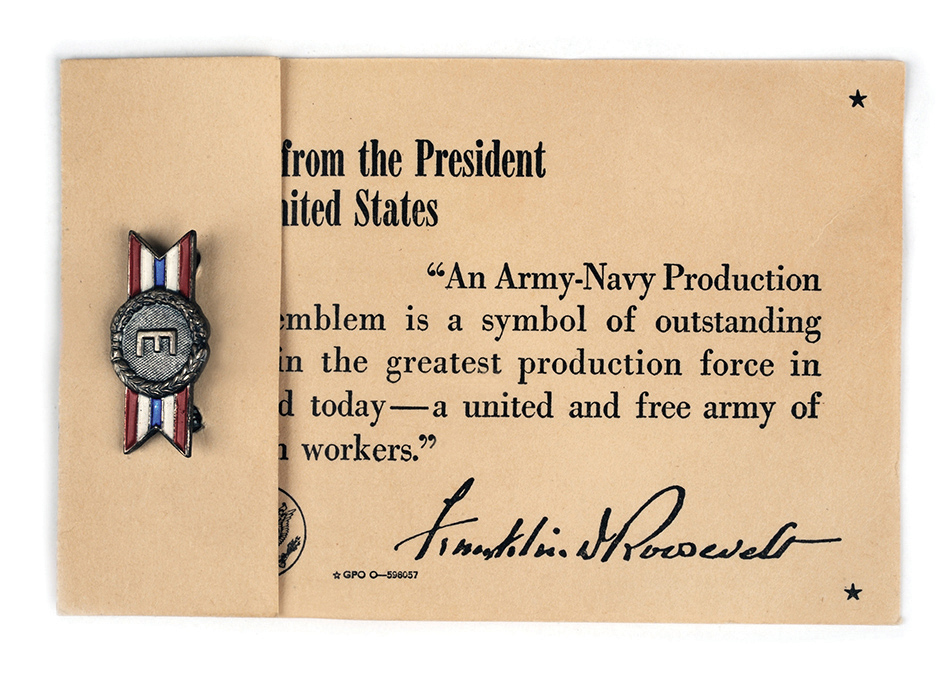
U.S. Army-Navy E Award pin and presentation card
ca. 1942-1945The Society of the Cincinnati, Museum purchase, 2022
The Army-Navy E Award program, headquartered at the Navy’s Industrial Incentive Division at Anderson House, played a major role in raising the spirits of workers on the home front during WWII. Presented to plants that achieved outstanding performance in war production, the E Awards inspired great public ceremonies to be held upon the granting of this distinction. The press was courted, banners and flags were flown, and individual employees were given lapel pins like these, attached to a pre-printed message from President Roosevelt, accompanied by his signature.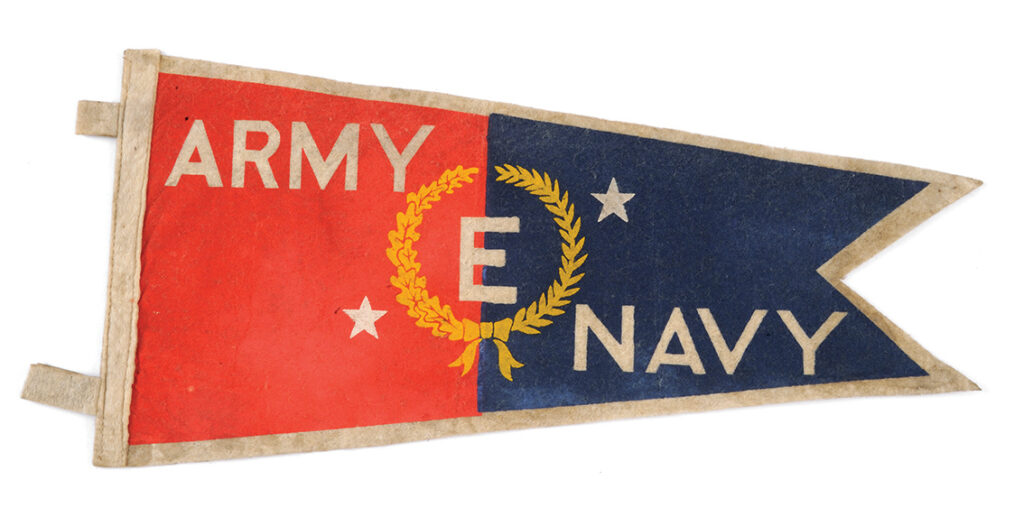
U.S. Army-Navy E Award pennant
American
ca. 1942-1945The Society of the Cincinnati Collections
This wool pennant was left behind at war’s end, when the Navy departed Anderson House and the Society moved back into its building. Along with a medical stretcher, a handful of wooden office chairs and a metal desk, it is one of the few physical remnants that remain in the mansion today from the Navy’s time.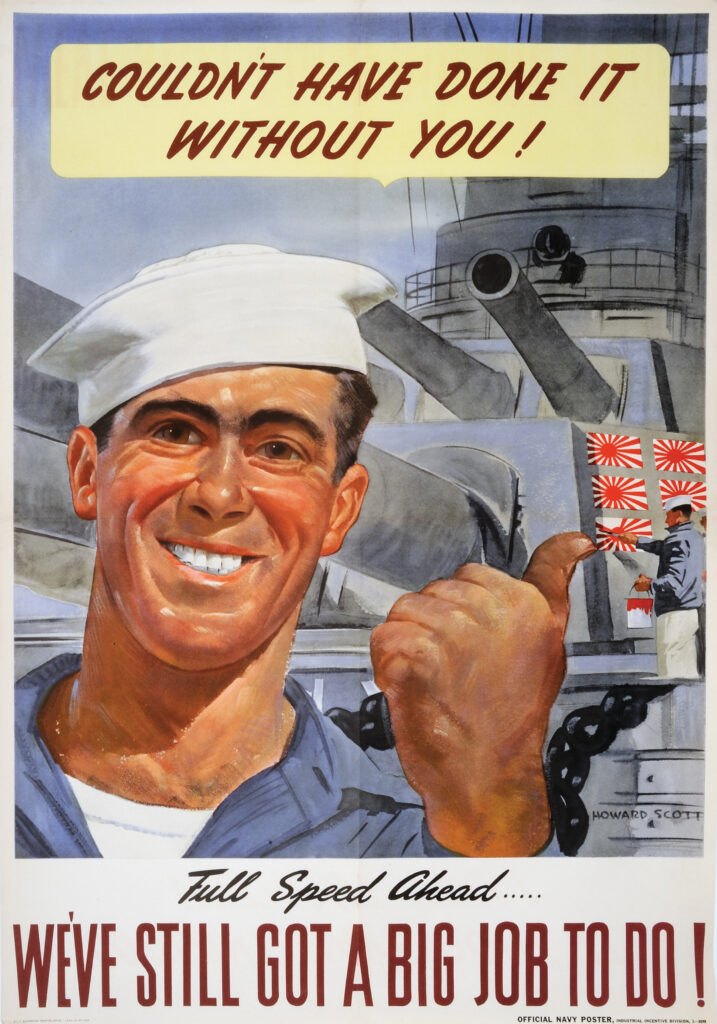
Couldn’t Have Done It Without You!
Poster illustrated by Howard Scott
Washington, D.C.: United States Government Printing Office, 1943The Society of the Cincinnati, Library purchase, 2023
The Art and Poster Section of the Navy’s Industrial Incentive Division promoted the benefits of American businesses contributing to the war effort, using richly illustrated propaganda posters that lent an emotional wallop. Other poster titles distributed from Anderson House include Don’t Slow Up the Ship, Swing it Brother!, The freedom of the seas is in Your hands!, Death on Subs!, Pass the Ammunition and Think of Them Before You Take a Day Off!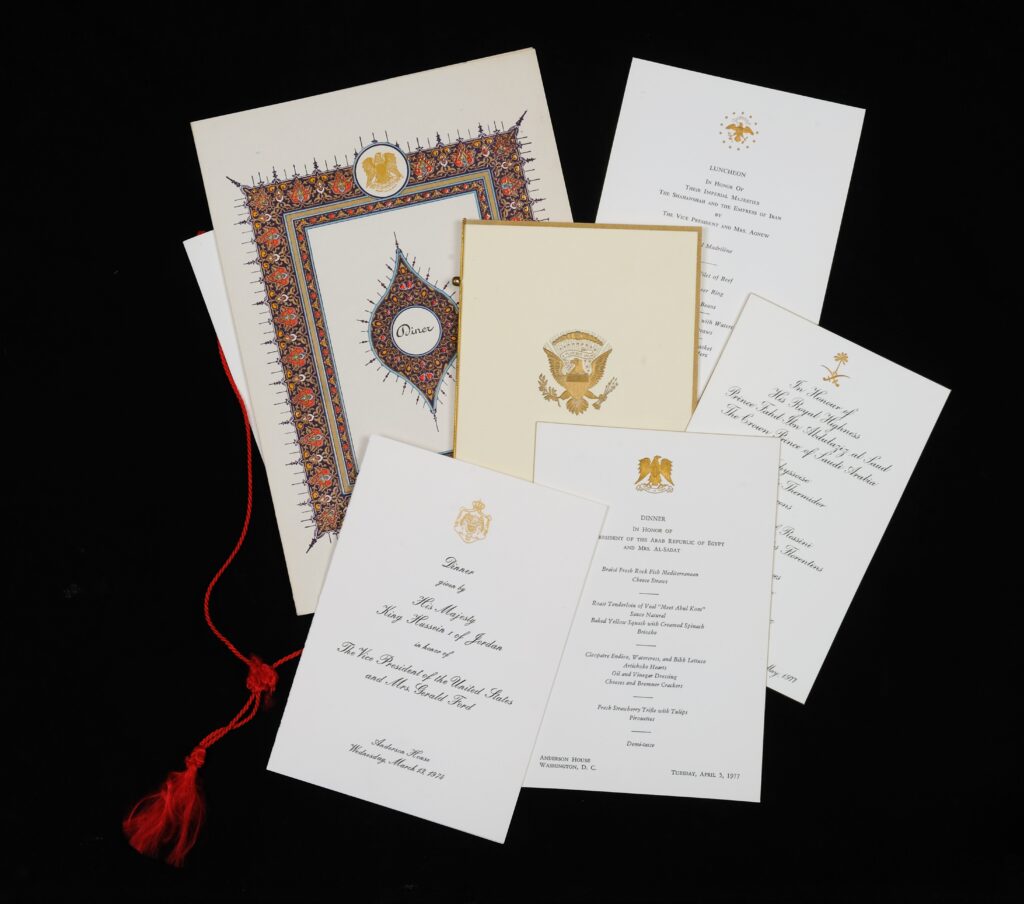
U.S. State Department menus and invitations
1975-1983The Society of the Cincinnati Collections
At war’s end in 1945, the Society once again took over its house, offering it for official government entertaining while also allowing some social rentals for members and friends. U.S. State Department events took place regularly at Anderson House through the 1980s, attended by heads of state, foreign ministers and other government officials. Invitations and menus on display include a dinner invitation in honor of Her Excellency Milka Paninc, president of the Federal Executive Council of the Socialist Federal Republic of Yugoslavia, by the Vice President and Mrs. Bush, 1985; a menu for a dinner in honor of His Royal Highness Prince Fahd Ibn Abdulaziz al Saud, The Crown Prince of Saudi Arabia, 1977; and a menu for a dinner in honor of His Majesty King Hussein I by the Ambassador of Jordan and Mrs. Salah, 1975.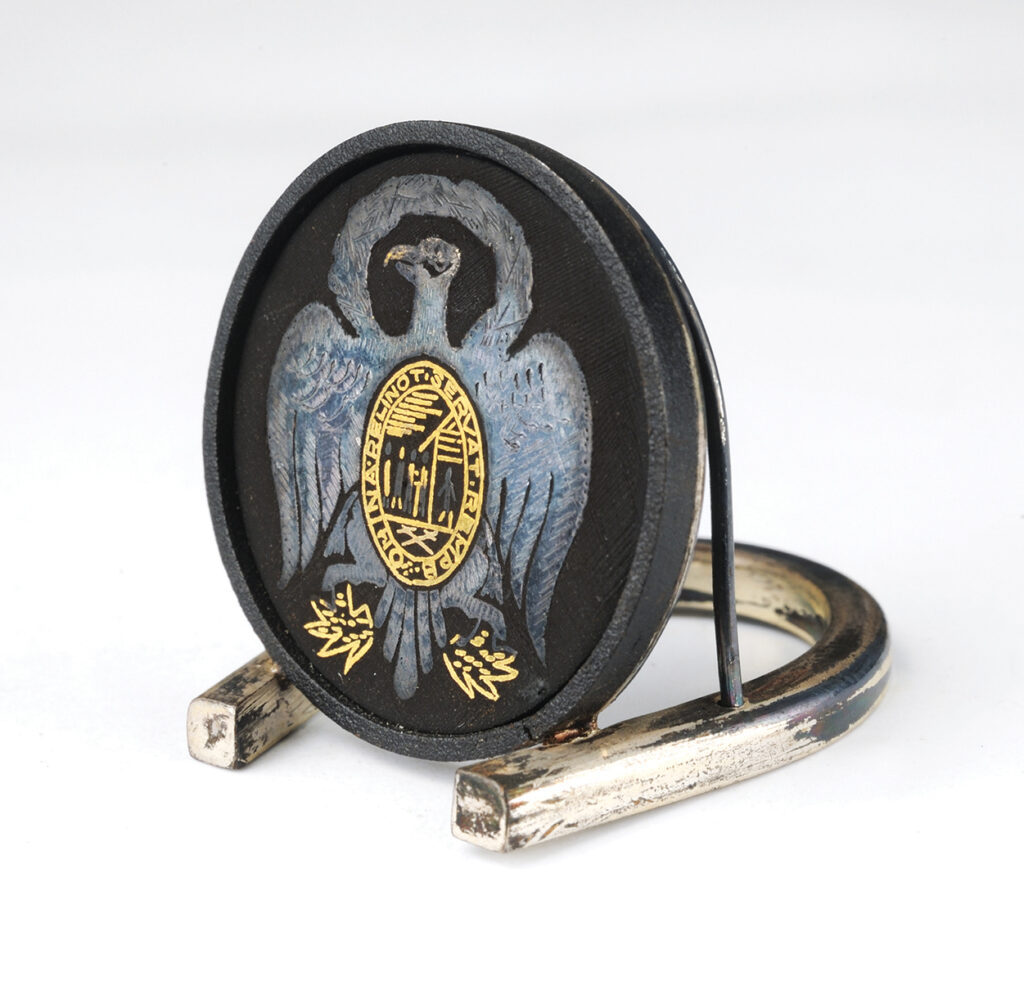
Place card holders
American
ca. 1950The Society of the Cincinnati, Gift of Edgar Erskine Hume, Society of the Cincinnati in the State of Virginia, 1951
For dinners held in conjunction with Society of the Cincinnati’s meetings at Anderson House, the tables were often adorned with imagery of the Society and its history. In the 1940s and 1950s, the Society used these damascene place card holders bearing the Eagle insignia, and sometimes displayed on the tables small watercolor drawings of Society members, past and present, painted by a member of the Virginia Society, John R. M. Taylor.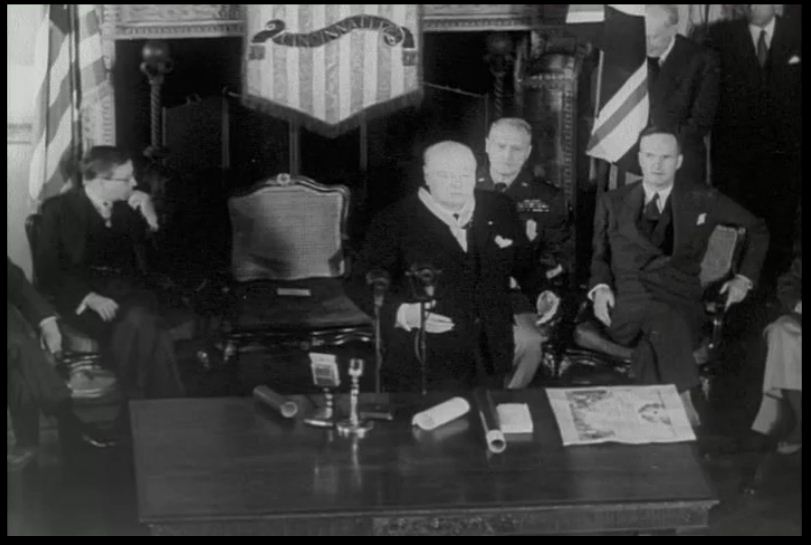
Winston Churchill at Anderson House
Film by Fox Movietone News
January 16, 1952The Society of the Cincinnati, Gift of the Twentieth Century Fox Film Corporation, 1952
Britain’s Prime Minister Winston Churchill joined the Society of the Cincinnati as a member in his own right, through the line of his American-born mother. He was presented with the Eagle insignia of Society membership in the Anderson House Ballroom on January 16, 1952. The next evening he attended a reception in the English Drawing Room. Watch the restored film footage here.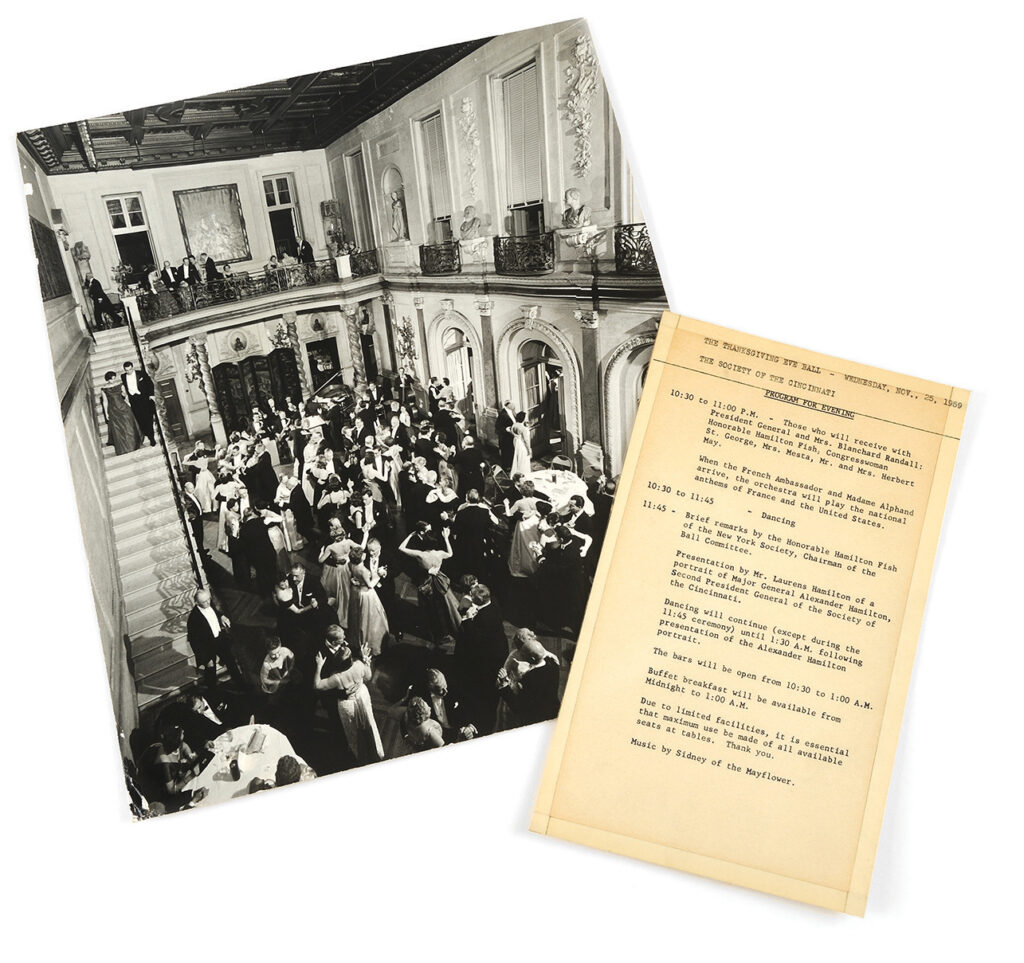
The Thanksgiving Eve Ball
Photograph by Paul Schutzer for LIFE
Washington, D.C., 1959The Society of the Cincinnati, Library purchase, 2018
The Thanksgiving Eve Ball of 1959 was a milestone in fundraising for the museum acquisitions fund. Mrs. Herbert May (Marjorie Merriweather Post) served as chair, and famed “Hostess with the Mostest” Perle Mesta was among the guests. Mrs. Mesta served as U.S. minister to Luxembourg from 1949 to 1953, succeeded in her post by Wiley Buchanan. Guests came from dinners held around the city, a lucky few having been invited to the Dining Room at Anderson House. According to the program for the evening, the receiving line opened at 10:30 pm, and a buffet breakfast was served from midnight to 1:00 a.m.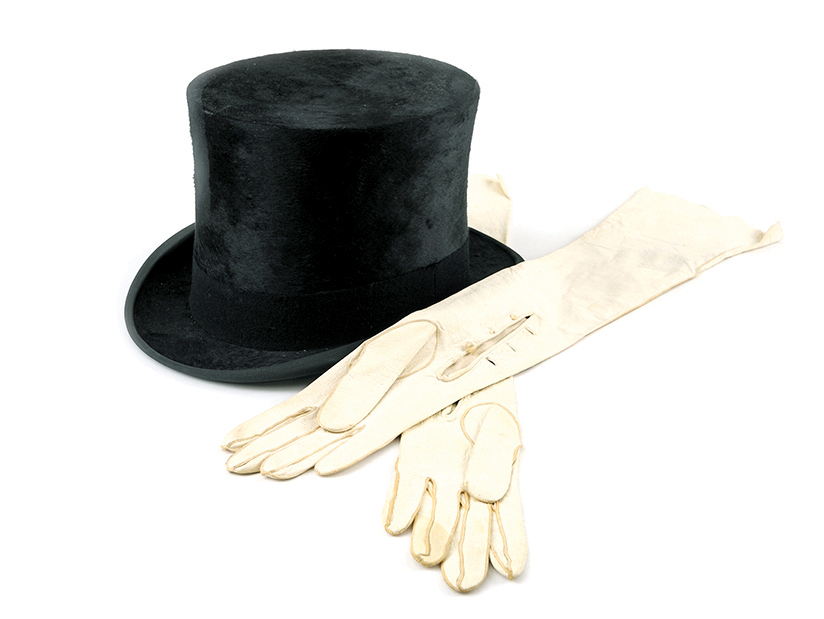
Top hat and opera gloves
Herbert Johnson, London, England (hat); Paris, France (gloves)
Mid-20th centuryOn loan from Mrs. Bonnie B. Matheson
Wiley T. Buchanan, chief of protocol during President Eisenhower’s administration, was often photographed wearing this silk top hat at State Department events. His wife, Ruth, wore these white kidskin gloves as she assisted her husband in their entertaining duties. Buchanan’s 1964 memoir, Red Carpet at the White House, related: “We used various buildings in Washington for entertainments. At Anderson house, a typical ‘upstairs’ dinner for thirty-six cost $1500. A dinner for sixty-five downstairs cost $2800.”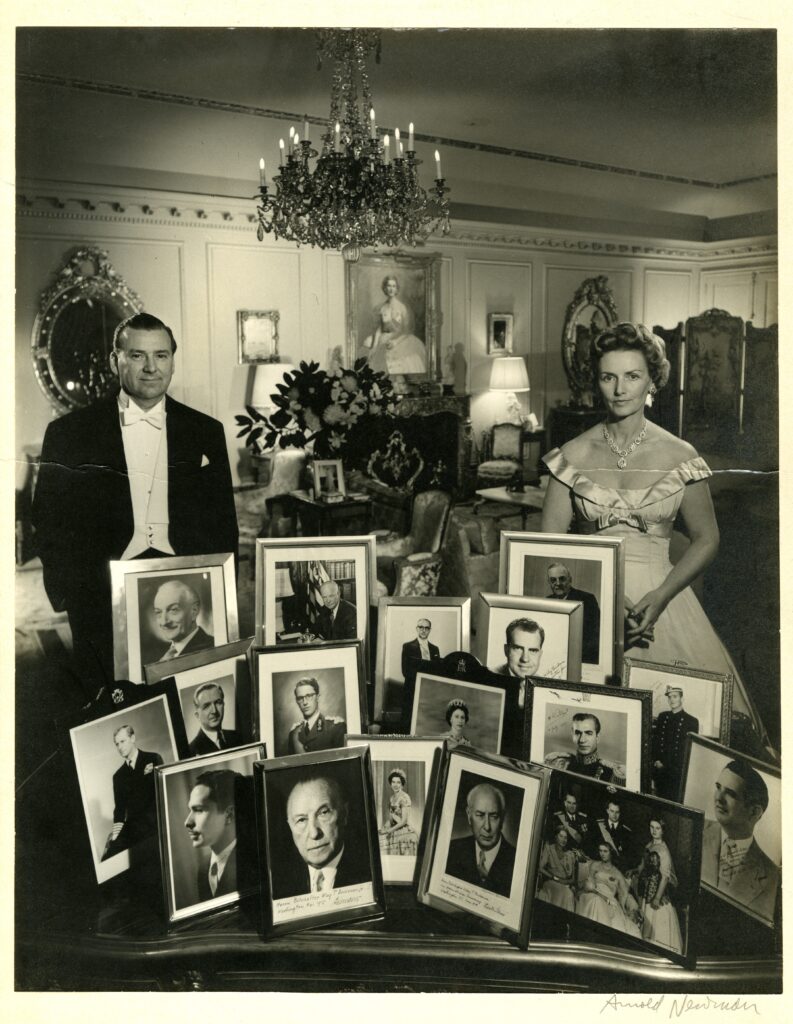
Wiley T. and Ruth Buchanan at Home
Photograph by Arnold Newman for LIFE
ca. 1959On loan from Mrs. Bonnie B. Matheson
This print by famed photographer Alfred Newman captured the Buchanans in the living room of their Washington home, posing in front of seventeen autographed portraits of various heads of state and other leaders with whom they worked. At least four of this distinguished group are known to have been entertained at Anderson House. The photographer trailed the couple for multiple days, including during a state dinner at Anderson House for Argentinean President Frondizi, for a story published in the February 2, 1959, issue of the well-loved magazine.